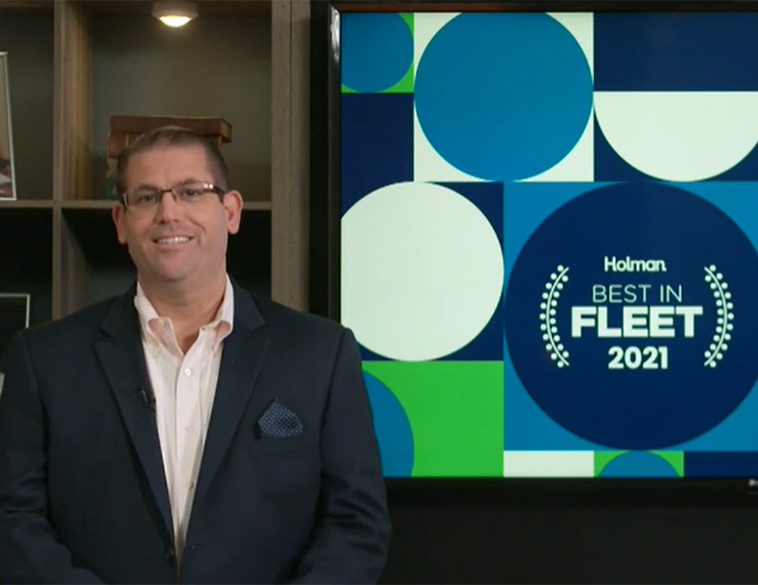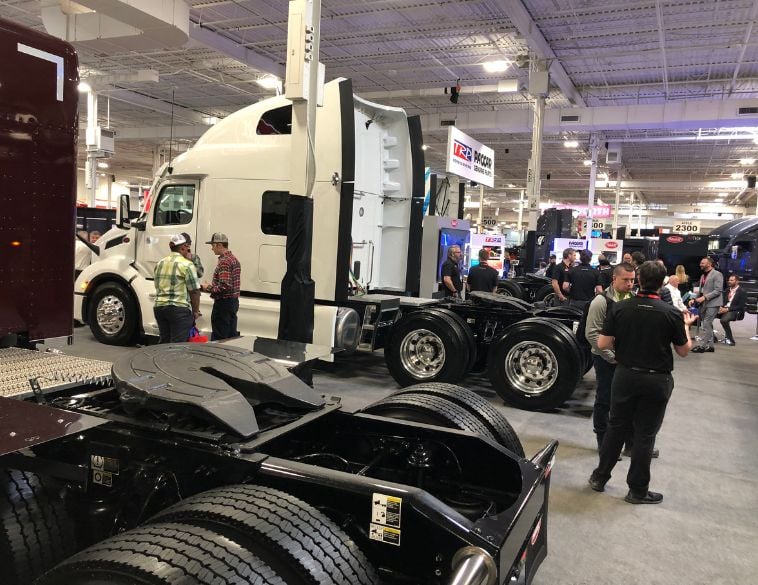Holman offers insight and advice to help fleet managers deal with the ongoing supply chain crunch.
Holman recently hosted its 2021 Best in Fleet conference virtually from November 9-10th.
The online event tackled a variety of timely topics, including sustainability, electric vehicles, technology and much more.
The elephant in the room, of course, was the supply chain disruptions everyone is struggling with.
Holman’s VP of North American Supply Chain, Ted Davis, couldn’t have put it better when he told the audience, “The supply chain is crazy.”
He added, “The current automotive supply chain challenges stem from a lack of available semiconductors, and unfortunately, there doesn’t seem to be much relief on the horizon. In fact, when we compare the first nine months of production in 2021, to that of 2019 prior to the pandemic, we see a 38% decrease in total production, when compared to last year, were in the same period, production was down 11%.”
To make matters worse, Davis explained how dealers are struggling to keep up with consumer demand, and that dealerships across North America are reporting upwards of 75% of their inbound inventory already being sold before it even arrives at the store.
“Additionally,” he said, “recent announcements from at least one major domestic OEM have signalled that there will not be a return to pre-pandemic inventory levels, as reduced inventory levels have proven to be favourable for the company.”
Big picture; big challenge
He stressed the fact that there’s a much bigger picture to be concerned with.
“Although most of the headlines have focused on vehicle production challenges,” Davis said, “for many of you, that’s just the beginning of your vehicles’ journey to becoming a viable tool for your business.”
“If you look downstream to key providers in a supply chain, such as manufacturing and upfit, and transportation providers, we see a new set of headwinds appear—from raw material shortages and delays to increased cost of goods and freight to throughput challenges, given the broad fluctuation in inbound OEM deliveries to a shrinking workforce.”
In short, the problem is huge, and it’s not likely to be solved anytime soon.
Davis highlighted numerous other challenges with the supply chain and then predicted when North American fleets could expect to see a light at the end of the proverbial tunnel.
“I hate to be the bearer of bad news,” he said, “but the current challenges will certainly remain in place throughout 2022, will likely linger throughout 2023, and now analysts are starting to talk about those impacts lasting into 2024.”
Strategies & solutions
When it comes to supply chain issues, most fleet managers are familiar with the adage, “order early, order often.” That said, Holman’s Davis offered a new term: order simply.
“This is certainly something new,” Davis added, “and what I mean is that fleet managers should use simplicity as a tool to increase flexibility. In other words, can you do the job with more than one trim level or more than one model?”
“And if you can, design your vehicle so that you have that flexibility between those two so that if one vehicle comes up, but you can’t order it anymore, you can quickly shift to a different vehicle, and not have to change your entire process.”
Moving forward, Davis offered fleet managers advice on how to deal with the many supply chain issues facing them right now, and into the near future. “Collaborate with your FMC and with your OEM partners,” he said.
“Simplify your specs, and simplify how you use your vehicles, and where you use them if you can,” Davis continued.
“Plan—don’t just plan for your order, but plan for what it does to your overall fleet from a lifecycle perspective. And be dynamic—position your business to be dynamic and take advantage of the ability to order when that availability comes.”
“Finally, budget—make sure you have the capital so that you’re ready to take advantage of the opportunity to secure vehicles when that opportunity arises.”
OEM strategies
In an effort to help mitigate some of the impacts of the semiconductor shortages, we’re now seeing OEMs proactively adjust to help relieve the stress of the supply chain.
For example, GM recently shared plans to employ a technique they’re calling “Build Shy” in order to offer relief as soon as semiconductors are available.
In short, Build Shy means that GM is building vehicles, and then parking them at the end of the assembly line, but without the semiconductors, they need to be installed.
The goal is to “Build Shy” of actually putting these vehicles on the road. As GM gets semiconductors, they install them in the already-built vehicles and send them off to dealerships.



